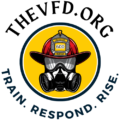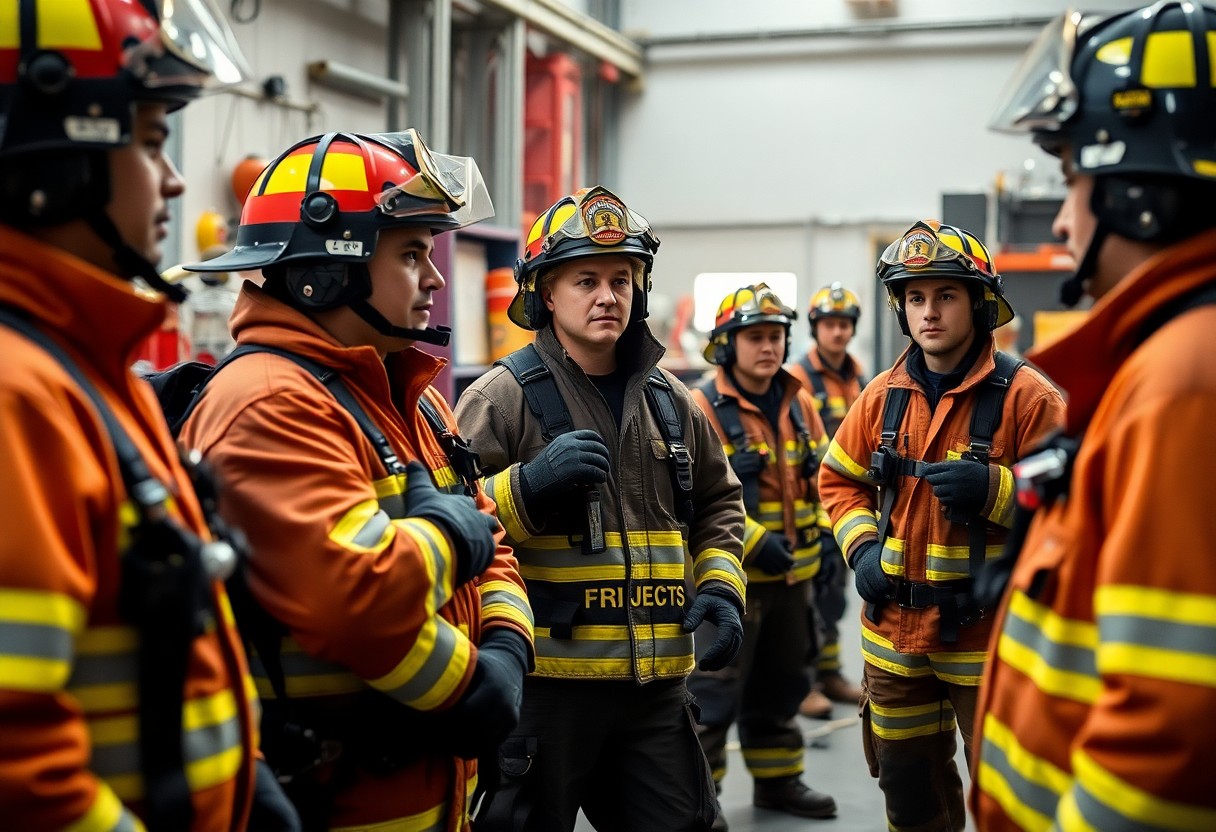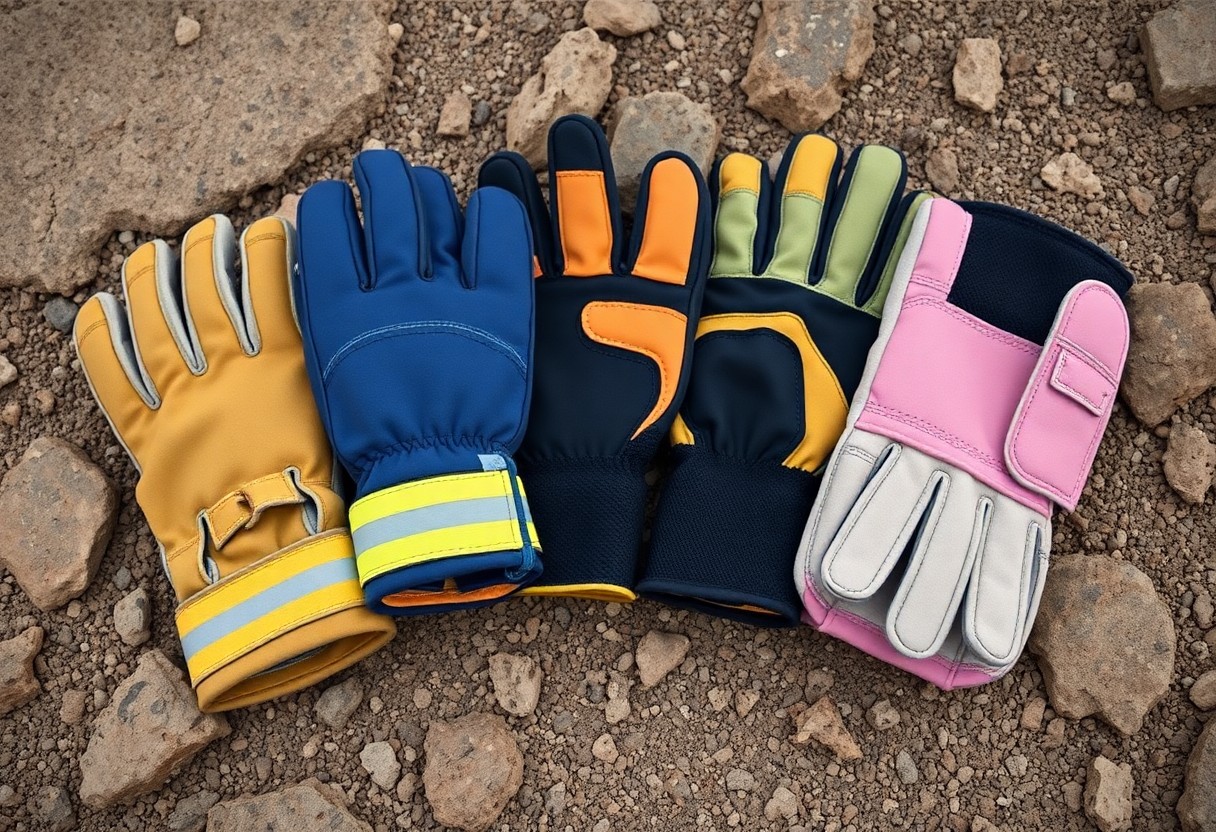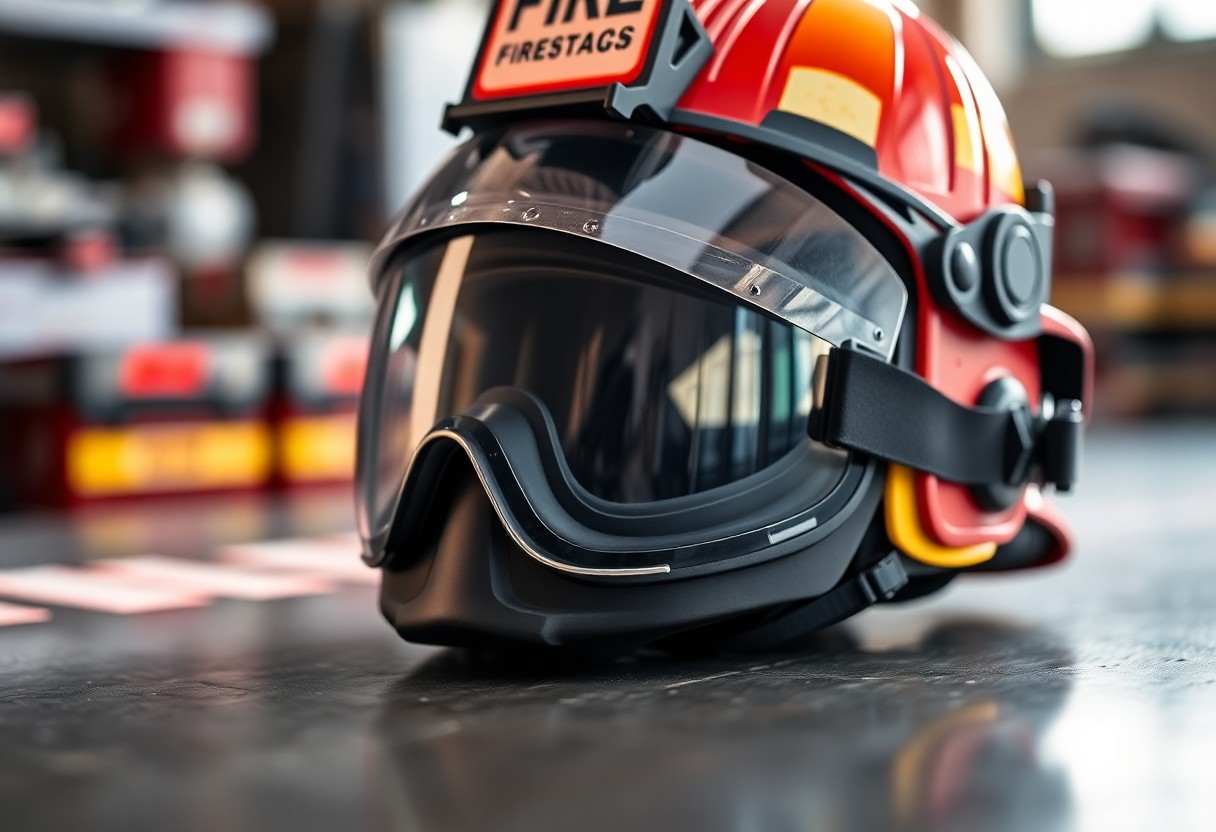Many volunteer fire departments face the challenge of ensuring their team is well-versed in Personal Protective Equipment (PPE) usage. In this guide, you will discover effective strategies to train your firefighters, fostering a culture of safety and preparedness. By implementing these tips from leading departments, you can enhance your team’s understanding of PPE and empower them to respond effectively in emergencies. Let’s explore how you can develop an impactful training program that equips your volunteers with the necessary skills and knowledge.
Understanding PPE: Importance and Types
Before you start training your volunteer firefighters, it’s vital to understand the significance of Personal Protective Equipment (PPE). PPE is designed to safeguard your firefighters from various hazards they may encounter while responding to emergencies. Key types include:
- Protective clothing
- Head protection
- Eye protection
- Respiratory protection
- Foot protection
| PPE Purpose | Protection from hazards |
| Types of PPE | Clothing, helmets, gloves, etc. |
| Material Types | Nomex, Kevlar, rubber, etc. |
| Customization | Fit for duty requirements |
| Maintenance | Regular inspections and cleaning |
Thou must prioritize understanding these crucials to cultivate a well-prepared firefighting team.
Overview of Personal Protective Equipment
While PPE serves a significant role in fire response, it is equally crucial to ensure that all firefighters are well-acquainted with how to use and maintain their gear. Effective training incorporates hands-on demonstrations and theoretical understanding, enabling you to fully grasp your equipment’s functionalities and limitations in real scenarios.
Key Types of PPE for Firefighters
Some key types of PPE are fundamental for firefighting operations, including:
- Turnout Gear
- Fire Helmets
- Gloves
- Self-Contained Breathing Apparatus (SCBA)
- Boots
| Turnout Gear | Protects against heat and flames |
| Helmets | Shields the head from impacts |
| Gloves | Provides grip and thermal protection |
| SCBA | Ensures breathable air in toxic environments |
| Boots | Offers insulation and slip resistance |
Thou should ensure all personnel are equipped with these crucial types of PPE to enhance safety during firefighting tasks.
Firefighters require robust and reliable gear to face various hazardous environments. By equipping your crew with specialized PPE such as turnout gear, helmets, gloves, SCBAs, and boots, you can significantly reduce the risk of injury. Each piece of equipment must be tailored to meet specific operational needs and provide adequate protection in diverse situations.
- Valid certifications for all gear
- Routine checks for wear and tear
- Proper fitting based on user’s physique
- Regular training on PPE usage
- Storage in appropriate conditions
| Certification Standards | UIL and NFPA specifications |
| Fit Testing | Ensures safety and comfort |
| Inspection Schedule | Regular check-ups |
| Training Frequency | Annual and on-demand |
| Storage Guidelines | Dry, clean, and out of sunlight |
Thou must give attention to these key aspects to ensure your volunteer firefighters are not only equipped, but also trained effectively for their protective gear.
Factors to Consider When Training
There’s a variety of factors to consider when training volunteer firefighters on PPE usage to ensure their safety and effectiveness on the field. Highlighting the PPE’s features and proper usage protocols is necessary, along with addressing the following:
- Experience levels of volunteers
- Types of emergencies encountered
- Environmental conditions
- Available resources
- Ongoing training opportunities
Knowing these factors will help you design a comprehensive training program that meets the needs of your department.
Experience Levels of Volunteers
Any group of volunteer firefighters will have varying levels of experience, which can impact their understanding of PPE. It’s vital to assess each member’s competency and tailor your training approaches accordingly. This may include:
- New recruits with minimal experience
- Intermediate members with some training
- Veterans with advanced skills
- Peer mentoring opportunities
- Hands-on assessment sessions
Types of Emergencies Encountered
Even though every emergency situation can differ, you should prepare your volunteers for a range of potential scenarios. Your training should cover various emergencies, including:
| Fire incidents | Hazardous materials |
| Rescue operations | Medical emergencies |
| Natural disasters | Vehicle accidents |
| Public events | Home safety inspections |
| Community outreach | Fire prevention activities |
Any effective training program should empower volunteers to confidently respond to these diverse situations while using their PPE properly.
Training your volunteers effectively requires a focus on various emergencies they will likely face. Each type of emergency presents unique challenges and hazards based on specific factors, including:
- Intensity and scale of the incident
- Location and accessibility
- Hazards present (e.g., toxic smoke)
- Response time and available resources
- Collaboration with other emergency services
| Scenario planning | Simulation drills |
| Debriefing sessions | Real-life case studies |
| Risk assessment training | Task-specific instruction |
| PPE fitting workshops | Emergency communication drills |
| On-going refresher courses | Peer feedback sessions |
Training in this manner ensures that all volunteers are prepared to handle a variety of emergencies with confidence and proficiency. Any well-rounded training program will significantly improve their response effectiveness.
Developing a Training Program
If you’re looking to effectively train your volunteer firefighters on PPE usage, developing a structured training program is necessary. This program should encompass all aspects of PPE, including its importance, proper usage, inspection, and maintenance. Tailor your curriculum based on the unique needs and skill levels of your team, ensuring everyone feels confident and informed about their protective gear.
Setting Clear Objectives
Developing clear objectives helps you focus on what your training must achieve. Define specific outcomes for each session, such as understanding the components of PPE, demonstrating proper fitting techniques, and recognizing when equipment is expired or damaged. This clarity not only guides your teaching but also ensures that your volunteers remain engaged and motivated throughout the training process.
Structuring Training Sessions
Clearly outlining your training sessions enables you to deliver information more effectively and provides a roadmap for your volunteers to follow. Every session should combine theoretical knowledge with practical demonstrations to enhance retention and skill application. Don’t forget to incorporate hands-on activities that allow your firefighters to practice PPE usage in realistic scenarios.
For instance, you might start each session with a brief overview of the day’s objectives, followed by a discussion or video presentation on the significance of PPE. Next, transition into live demonstrations of putting on the gear, inspecting it for damage, and discussing its maintenance. Finally, allow your team to participate in a simulation where they can wear the PPE and respond to a practice emergency, ensuring that learning is both interactive and effective.
Engaging Training Techniques
Now that you understand the importance of PPE usage, it’s crucial to employ engaging training techniques to ensure your volunteer firefighters absorb the information effectively. Utilizing various methods can cater to different learning styles, improving retention and application in real-life scenarios. By incorporating a mix of hands-on demonstrations, interactive learning, and real-world simulations, you can create a dynamic training environment that both educates and motivates your team.
Hands-On Demonstrations
Demonstrations are an excellent way to provide your firefighters with practical experience. By showcasing proper PPE usage in a controlled setting, you allow them to visualize and practice the techniques they will need on the field. Make sure to involve your volunteers actively during these demonstrations, as hands-on experience can significantly enhance their confidence and comfort when wearing and utilizing their gear in emergency situations.
Interactive Learning Methods
Training that encourages active participation is more likely to resonate with your volunteers. Incorporating group discussions, problem-solving activities, and scenario-based exercises fosters collaboration and critical thinking. By allowing your team to engage with the material through discussions and simulated emergencies, you create a deeper understanding of PPE usage, ensuring they can apply their knowledge effectively when it matters most.
Another effective approach is to integrate technology into your training sessions. Utilizing multimedia presentations, interactive quizzes, and simulations can make the learning process more engaging. Tools like virtual reality can provide an immersive experience, allowing your volunteers to navigate various scenarios while practicing PPE protocols. This modern approach not only captures attention but also enhances the retention of important safety practices. Combining traditional methods with innovative techniques offers a well-rounded training program that keeps your team informed and prepared.
Safety Protocols and Best Practices
Many leading fire departments emphasize the importance of safety protocols and best practices when training volunteer firefighters on PPE usage. Establishing standardized procedures for wearing, handling, and storing protective gear ensures that your team is well-prepared for the challenges they face in the line of duty. Ongoing training and adherence to these practices not only enhance safety but also boost confidence among your volunteers, fostering a culture of accountability and commitment.
Ensuring Proper Fit and Function
On your journey to equip volunteer firefighters with the right PPE, ensuring a proper fit and function is paramount. The gear should be tailored to each individual’s size and shape to maximize mobility, comfort, and protection. Conduct regular fittings and encourage feedback during training sessions, allowing your team to adjust their equipment for optimal performance.
Maintenance and Inspection Guidelines
One of the key aspects of ensuring the longevity and effectiveness of PPE is adhering to maintenance and inspection guidelines. Regularly inspect gear for wear and tear, and implement a schedule for cleaning and storage to prolong your equipment’s life.
Understanding how to maintain and inspect PPE is fundamental to your team’s safety. Establish a routine for checking for damages such as tears, melted areas, or worn-out components. Additionally, provide clear instructions on how to clean various materials while ensuring that any cleaning agents used do not compromise the protective features of the gear. Training your volunteer firefighters on these maintenance practices helps them take ownership of their equipment and reinforces a culture of safety and preparedness.
Evaluation and Feedback
Your training program’s success hinges on effective evaluation and feedback mechanisms. Establishing a structured process for assessing firefighter performance ensures that they not only understand PPE usage but can also apply it confidently in real situations. Continuous feedback loops create opportunities for improvement, reinforcing the importance of compliance and safety protocols within your team.
Assessing Skill Proficiency
An effective way to gauge your volunteer firefighters’ understanding of PPE usage is through practical assessments. Conduct hands-on evaluations to observe their ability to properly don, doff, and maintain their gear. This real-world assessment helps identify areas for additional training and reinforces the importance of proper PPE technique in protecting themselves and others in emergency scenarios.
Gathering Volunteer Feedback
Even the most well-structured training programs can be improved with input from your firefighters. Encourage them to share their thoughts on the training process and their comfort level with the PPE. Their insights can provide valuable perspectives that help refine future training sessions and ensure that all volunteers feel fully equipped to handle their responsibilities.
Volunteer feedback is necessary for creating an inclusive training environment. By actively soliciting their opinions, you foster a sense of ownership and accountability among your team members. Consider conducting surveys or holding focus groups after training sessions to gather this valuable input. Analyzing their feedback can highlight common concerns or preferences, allowing you to tailor future programs to better meet their needs and enhance overall safety standards.
Summing up
With these considerations, you can effectively train your volunteer firefighters on PPE usage, ensuring their safety and preparedness. By implementing comprehensive training programs, utilizing hands-on practice, and fostering an environment of open communication, your team will become proficient in the proper handling and maintenance of their protective gear. Regular evaluations and updates based on feedback will further enhance their skills, inspiring confidence in their abilities. Ultimately, prioritizing PPE training will enhance operational efficiency and protect those who bravely serve your community.



